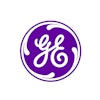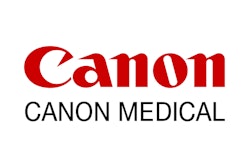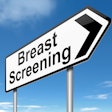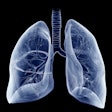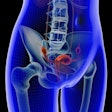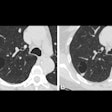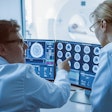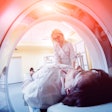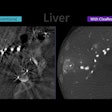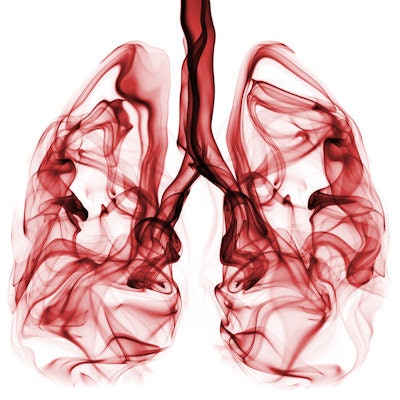
An academic hospital that implemented a CT lung cancer screening program obtained similar detection rates as the National Lung Screening Trial (NLST). But it also encountered challenges that needed to be addressed to improve the quality of screening, which researchers describe in a new study published in Academic Radiology.
 Dr. Nupur Verma from the University of Florida.
Dr. Nupur Verma from the University of Florida.
"Though the end point of our study validated the NLST results, the greater goal of our paper was to share our experience, including potential areas of improvement along the way, to assist other small to midsize academic programs and radiology groups in establishing a lung cancer screening program," co-author Dr. Nupur Verma told AuntMinnie.com. "We hope the impact of our report is increased availability of this screening exam and a move toward increased awareness of the role and limitations of low-dose CT for lung cancer screening."
Similar detection rate
Several large-scale trials, including the NLST, have demonstrated the potential benefits of using CT for the early detection of lung cancer. The findings have prompted an increasing number of medical centers to launch their own CT screening programs.
One such program is at UF Health Shands Hospital in Gainesville. Between March 2015 and July 2016, 272 patients at the institution underwent CT exams for lung cancer screening, though only 218 patients met the U.S. Preventive Services Task Force (USPSTF) criteria. Half of the patients were female, their median age was 64 years, and their median smoking history was 42 pack-years.
Among the 272 individuals, 53 had a positive screen (a Lung-RADS score of 3 or 4) and six turned out to have lung cancer. The overall cancer detection rate was slightly lower in this screening program than in the NLST.
| CT lung cancer screening at a local hospital compared to the NLST | ||
| NLST | UF Health Shands Hospital | |
| Positive screen | 24.2% | 19.5% |
| Lung cancer detection rate | 3.8% | 2.2% |
In addition to lung cancer detection, the UF researchers recorded their spectrum of imaging findings as well as patient radiation dose. Approximately 44% of patients had one or more lung nodules, 60% had minimal to severe emphysema, and 18% had lymphadenopathy. The overall mean CT dose index volume (CTDIvol) was 3.12 mGy, and the CTDIvol range was from 0.98 mGy to 31.2 mGy.
After screening the first 169 patients, the researchers revised their protocol to reflect recommendations from the American Association of Physicists in Medicine (AAPM), and they used tube current modulation to lower the average CTDIvol to 2.31 mGy and the average effective dose to 1.42 mSv.
Challenges faced
Upon evaluating their results, Verma and colleagues noted a number of challenges to establishing an institution-wide lung cancer screening program.
One difficulty was setting up a uniform reporting method with adherence to consensus reporting guidelines. Among the first 50 screening exams, 18 reports provided neither a Lung-RADS score nor consensus follow-up recommendations, despite the automated appearance of a structured reporting template when physicians opened the exams. For example, several providers referred patients for screening even though they did not fall within the required age range stated in the USPSTF criteria.
Another difficulty was selecting ideal scanning protocols and radiation dose levels when dealing with multiple scanner models from various vendors. In this case, there were seven different CT scanners that included 16-, 64-, 160-, or 320-row detectors; one scanner was from Phillips Healthcare, two were from Siemens Healthineers, and four were from Canon Medical Systems (formerly Toshiba Medical).
All of the scanners offered radiation dose reduction via tube current modulation, and two of them further reduced dose with iterative reconstruction algorithms. Despite the increased capacity of iterative reconstruction to minimize radiation dose, most of the patients underwent screening in a scanner that did not offer iterative reconstruction.
"Although protocols were initially modified by technologists, they were not utilized with maximal dose savings techniques until medical physicists verified patient dose and reviewed protocol recommendations by the AAPM," the authors wrote.
Furthermore, there was also variation in scanning protocols, even among exams acquired from the same CT scanner. Out of the 226 scans from the Siemens scanner, the first 123 had a fixed tube current of 150, 240 or 300 mA, whereas the last 103 had a fixed tube current of 25 mA, following protocol revisions by the AAPM.
A final major challenge was ensuring that patients would receive appropriate follow-up care -- especially subsequent screening examinations, Verma said. Anticipating this hurdle, the group set up a nurse navigator to coordinate postscreening care.
Lessons learned
In response to these challenges, the authors pursued several measures as part of their multidisciplinary approach to screening for lung cancer with CT:
-
Emphasize physician and patient partnership. Research has shown that counseling improves patients' understanding of CT screening, and effective counseling often relies on forming a partnership. Before even starting a screening program, physicians need to stress the importance of adhering to potential follow-up screening and gauge the patient's willingness and capacity to undergo further diagnostic testing and treatment, according to the group.
"In the small number of positive results from the study, we have seen good patient participation and compliance with treatment as well," Verma said. "We are also partnering with marketing and in-place smoking cessation efforts to continue to increase awareness of the availability of this screening exam."
- Hold regular multidisciplinary meetings. At their institution, physicians from pulmonary medicine, radiology, and thoracic surgery gathered every month to review positive screening examinations. This facilitated further diagnostic and treatment planning and allowed for periodic review of appropriate screening utilization.
-
Provide educational initiatives. Developing a dedicated reporting template decreased misuse of the protocol, although it was not enough to guarantee adherence to consensus reporting guidelines, Verma noted. However, offering additional educational initiatives for faculty and trainees increased compliance to more than 95%.
"We quickly realized that trainee and faculty education efforts helped improve adherence to the report template and minimize variation in reporting, the latter being key in monitoring outcome at our institutional level as well as part of the national registry," she said.
-
Promote the use of radiation dose reduction techniques. As a general rule, physicians should opt for tube current modulation and iterative reconstruction. It is critical to lower radiation dose as much as possible to minimize the negative consequences of repeated CT scanning.
"When using tube current modulation, CTDIvol decreased significantly for patients of similar size as compared to fixed tube current," she said. "Preliminary reviews showed reductions in the range of 40% to 60%, depending on patient size."
- Establish a screening coordinator position. At their institution, the researchers had a "nurse navigator" take the lead on organizing care for referred patients with lung malignancy. The role involved ensuring all results were reviewed, arranging referral for consultation or further imaging, and scheduling and confirming follow-up screening with patients.
Looking to the future, the investigators plan to continue refining their screening-related care for patients by optimizing radiation dose reduction and assessing organ-specific doses, as well as expanding the role of the nurse navigator.
"We hope, as the [screening] service expands and demand for coordination care increases, to have a second coordinator who can be dedicated to the follow-up of these patients," she said.
